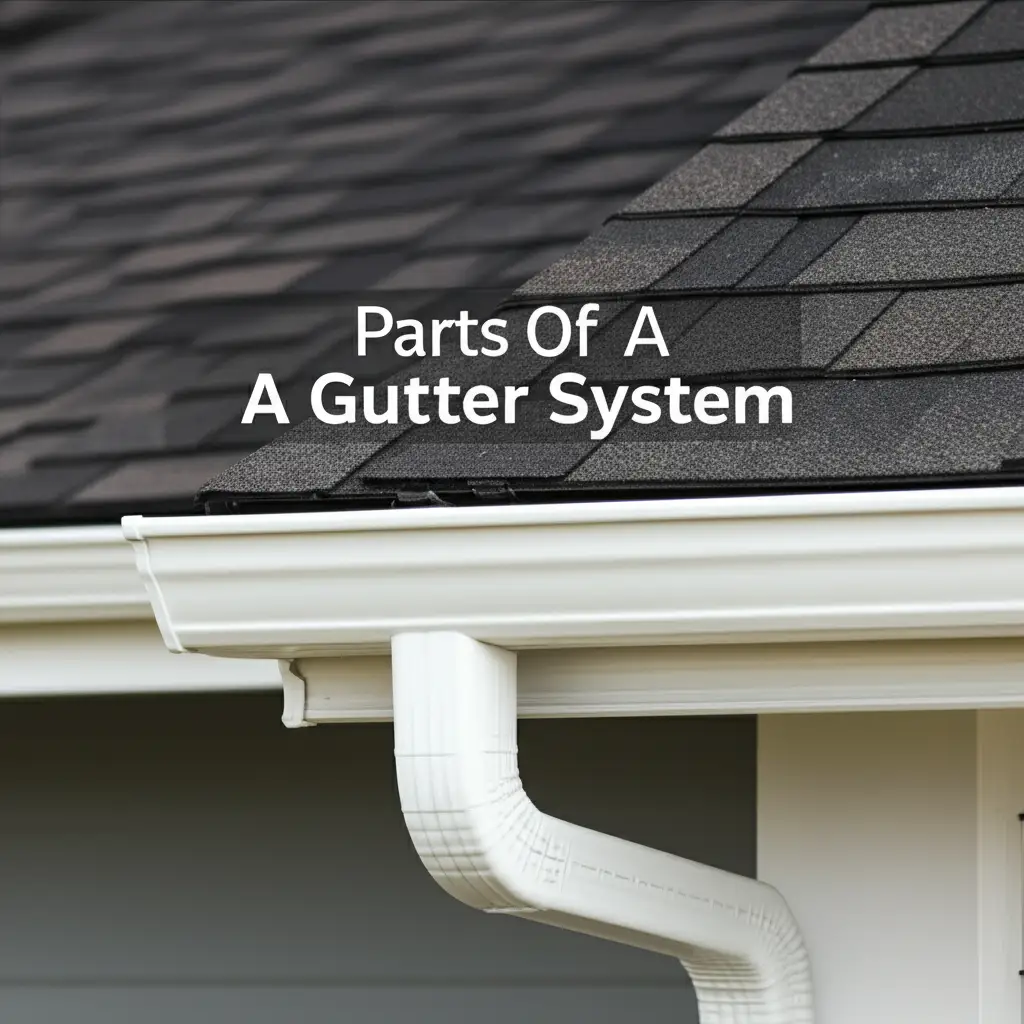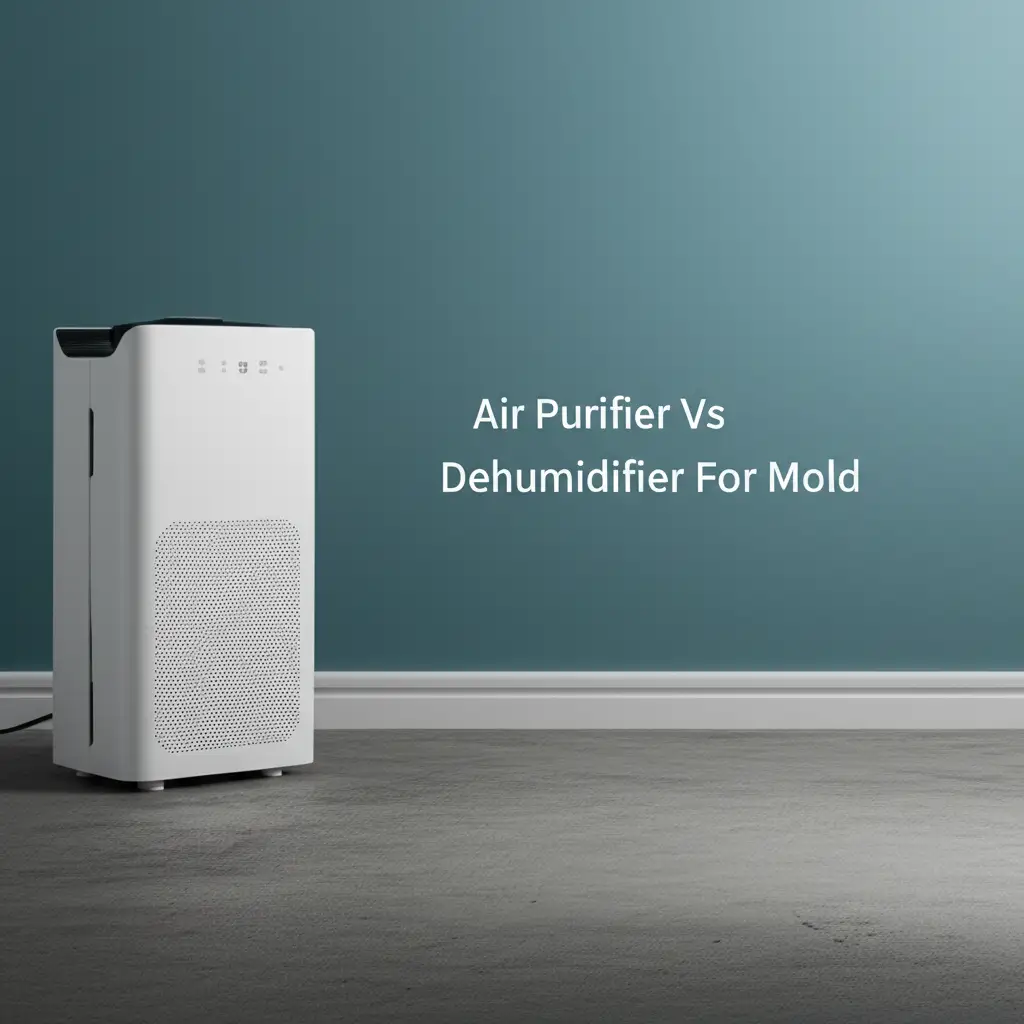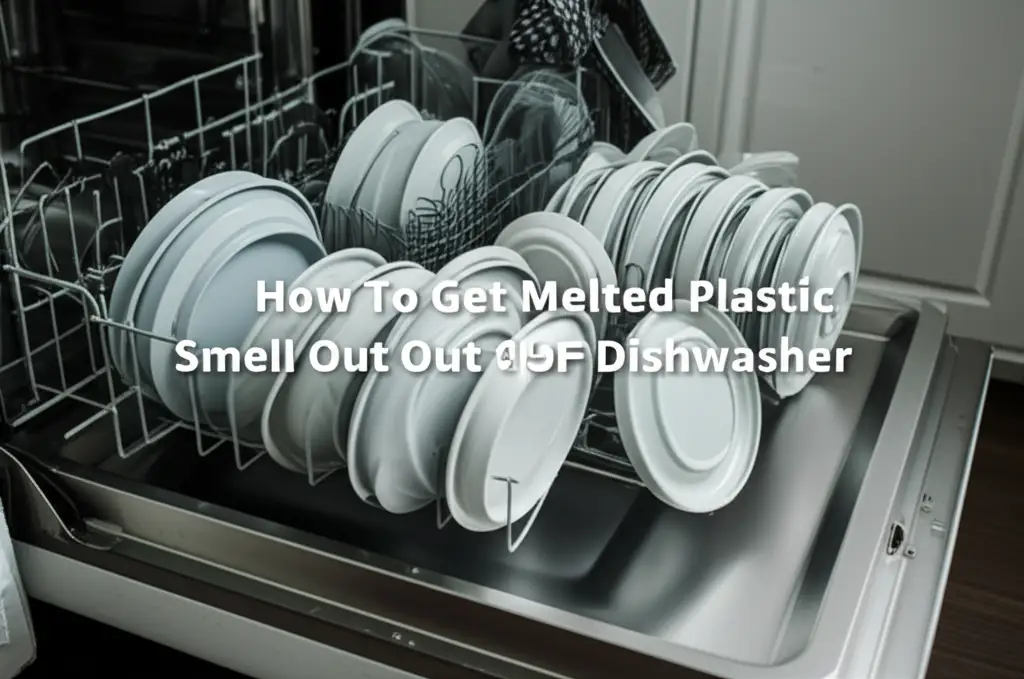· Elira Thomsen · Home Maintenance · 20 min read
Parts Of A Gutter System

Understanding the Essential Parts Of A Gutter System
Ever wondered what keeps your home safe and dry during a heavy rain? It is the humble yet mighty gutter system. Many homeowners overlook their gutters, but these systems play a vital role in protecting your house from water damage. Understanding the essential parts of a gutter system helps you appreciate their function and maintain them properly.
This article will guide you through each key component, explaining its purpose and why it matters. We will explore everything from the horizontal troughs that catch rainwater to the vertical downspouts that direct it away. We will also discuss the smaller but equally important elements, like hangers, end caps, and gutter guards. By the end, you will know exactly how your gutter system works to safeguard your property.
Takeaway:
- Gutter systems are essential for home protection, preventing water damage to foundations, siding, and landscaping.
- Each component, from troughs to downspouts, plays a specific role in water collection and diversion.
- Regular inspection and maintenance of all gutter parts ensure their longevity and effective performance.
- Understanding gutter components helps homeowners make informed decisions about repairs and upgrades.
A gutter system is a network of channels and pipes installed along the edge of a roof. It collects rainwater runoff and directs it away from a home’s foundation. This vital system protects siding, windows, doors, and landscaping from water damage and erosion.
The Gutter Trough: Catching the Rain
The gutter trough is the primary component of any gutter system. It is the long, horizontal channel installed along the roofline. Its main job is to collect rainwater as it flows off the roof. Without a proper trough, water would cascade directly down your home’s siding and splash onto the foundation.
Gutter troughs come in various materials, including aluminum, vinyl, steel, copper, and zinc. Aluminum is popular due to its affordability and resistance to rust. Vinyl is easy to install for DIY enthusiasts, while copper and zinc offer durability and a distinctive aesthetic. The choice of material often depends on climate, budget, and home style.
Gutter Trough Shapes
Different gutter shapes offer varied aesthetics and water-carrying capacities.
K-Style Gutters
K-style gutters are the most common type found on homes today. They have a flat back and bottom, with a decorative front that often resembles crown molding. This shape is very strong and can hold a large volume of water. K-style gutters are popular because they blend well with most architectural styles. They are also highly durable and efficient at handling heavy rainfall, making them a practical choice for many homeowners.
Half-Round Gutters
Half-round gutters have a semicircular shape. They provide a classic, historical look, often seen on older or architecturally traditional homes. These gutters are less common than K-style but are valued for their smooth interior, which allows water to flow freely and reduces debris buildup. Half-round gutters can be more challenging to install and may require more hangers for proper support due to their shape. Their elegant appearance makes them a premium choice for those seeking a specific aesthetic.
Custom Gutter Shapes
Beyond K-style and half-round, custom gutter shapes are available for unique architectural needs or personal preferences. Box gutters are large, rectangular gutters often built directly into the roof structure, providing a very clean, integrated look. Fascia gutters are designed to replace the fascia board, offering a seamless appearance and often a larger capacity. These custom options usually require professional installation and can be more expensive. They are chosen for specific design goals or when standard gutters do not fit the home’s style. The type of gutter you choose impacts its efficiency and the overall appearance of your home’s exterior.
Properly functioning gutters ensure water is directed away, preventing runoff that could splash dirt onto your walls or furniture near the house. Just as keeping your plastic patio furniture clean enhances its look, a well-maintained gutter trough protects your home’s exterior aesthetic.
Downspouts: Directing Water Away
Downspouts are vertical pipes that attach to the gutter trough at strategic points. Their job is to carry the collected rainwater from the trough down to the ground level or a drainage system. Without downspouts, the water collected in the gutters would simply overflow, defeating the purpose of the entire system.
Downspouts are typically rectangular or round and match the material of the gutters. Their size and number depend on the roof’s size and the typical rainfall in your area. Incorrectly sized or placed downspouts can lead to water pooling, overflowing gutters, and ultimately, water damage to your home’s foundation. It is crucial to have enough downspouts to efficiently handle the water volume from your roof.
Downspout Components and Accessories
To ensure downspouts function effectively, they often incorporate specific components.
Downspout Elbows
Downspout elbows are angled pieces that allow the downspout to change direction. They are commonly used at the top, to connect the downspout to the gutter trough, and at the bottom, to direct water away from the foundation. Elbows come in various angles, usually 45 or 90 degrees, to accommodate different architectural needs and ensure proper water flow. Correctly oriented elbows prevent water from pooling and help maintain a continuous drainage path.
Downspout Extensions
Downspout extensions are attachments added to the bottom of the downspout. They carry water further away from the house foundation. These extensions can be simple splash blocks, flexible pipes, or even underground drainage systems. Their main goal is to ensure that water discharges far enough away to prevent erosion, basement flooding, and foundation damage. Extensions are vital, especially in areas with significant rainfall or sloped yards.
A blocked downspout can cause water to overflow, leading to dirty runoff on your home’s exterior and potentially pooling on your walkways. Keeping your downspouts clear helps prevent unsightly stains on surfaces, much like regularly cleaning your concrete sidewalk helps maintain its appearance and prevents buildup.
Gutter Hangers and Brackets: Secure Support
Gutter hangers and brackets are essential hardware components that attach the gutter trough to the fascia board of your roof. They provide the necessary support to hold the gutters securely in place, even when they are full of water or ice. Without proper hangers, gutters can sag, pull away from the house, or even fall off completely.
There are several types of gutter hangers, each with its own installation method and benefits. The choice of hanger depends on the gutter style, the fascia material, and the expected weight the gutters will bear. Investing in strong, durable hangers is critical for the long-term stability and effectiveness of your gutter system.
Common Gutter Hanger Types
Understanding hanger types ensures your gutters stay firmly attached.
Spike and Ferrule Hangers
Spike and ferrule hangers are a traditional and common type. They consist of a long spike that passes through the front lip of the gutter, through a metal sleeve (ferrule) inside the gutter, and then into the fascia board. The ferrule keeps the gutter from collapsing as the spike is driven through it. While economical, these hangers can loosen over time, leading to sagging gutters, and the spike holes are visible on the outside.
Hidden Hangers
Hidden hangers are widely used today due to their clean appearance. These hangers clip to the front edge of the gutter and are secured to the fascia board with a screw from inside the gutter. They are “hidden” because they are not visible from the ground, creating a more seamless look. Hidden hangers offer strong support and are less likely to pull out than spike and ferrule systems. They are also more resistant to expansion and contraction, which can affect gutter stability.
K-Style Gutter Clips
K-style gutter clips are specific hangers designed for K-style gutters. They often involve a bracket that fits inside the gutter and screws directly into the fascia or roof decking. These clips provide robust support and are generally made from strong materials like aluminum or steel. They are engineered to distribute the weight evenly, which helps prevent sagging and maintains the gutter’s structural integrity. The use of appropriate clips ensures that your K-style gutters remain stable and functional through various weather conditions.
Ensuring your gutter hangers are secure helps prevent water from entering your home through unintended gaps, protecting your interior from water damage. Preventing such issues is key to reducing the need for intensive cleaning, similar to how proper home maintenance can help prevent conditions that would require you to clean carpet stains from pets inside your living space.
End Caps and Miters: Sealing and Turning
End caps and miters are small but indispensable components of a gutter system. They ensure that the gutter trough is a continuous, leak-proof channel for water collection and diversion. Without them, water would simply flow out the ends or through the corners of your gutter system.
End caps are flat pieces that fit over the open ends of a gutter section. They effectively seal off the trough, preventing water from spilling out where the gutter ends. Miters, on the other hand, are angled pieces used to connect two sections of gutter at a corner, allowing the gutter system to wrap around the contours of a roof. Proper installation and sealing of these components are crucial for a functional, leak-free gutter system.
Importance of Proper Sealing
Effective sealing is paramount for the long-term performance of your gutters.
Gutter End Caps
Gutter end caps are essential for closing off the open ends of the gutter runs. They ensure that all collected rainwater is funneled towards the downspouts and does not simply spill over the sides. End caps are typically secured with screws or rivets and sealed with a high-quality gutter sealant to prevent leaks. Proper sealing is critical; a leaky end cap can lead to water pooling around the foundation, causing erosion or damage. Regularly checking end caps for cracks or gaps helps maintain the integrity of your gutter system.
Gutter Miters
Gutter miters are specialized connectors used at inside or outside corners where two sections of gutter meet. These pre-formed angled pieces ensure a smooth transition for water flow around the roofline. Miters must be precisely cut and securely fastened to both gutter sections. Like end caps, they require careful sealing with gutter sealant to prevent leaks at the joints. Poorly installed or unsealed miters are common points of failure, leading to drips and potential water damage to the home’s exterior. Choosing the correct miter type and ensuring a watertight seal is vital for corner durability.
Leaky seams from poorly sealed end caps or miters can cause water to drip onto and stain your home’s exterior. This constant exposure to moisture can make surfaces dirty or prone to mold. Keeping these seals tight helps keep your home looking clean, similar to how you would clean white upholstery chairs to maintain their appearance and prevent discoloration.
Gutter Guards and Filters: Protection from Debris
Gutter guards, also known as gutter filters or covers, are optional but highly beneficial additions to a gutter system. Their primary purpose is to prevent leaves, twigs, shingle grit, and other debris from entering and clogging the gutter trough and downspouts. Clogged gutters can lead to serious problems, including water overflow, damaged fascia boards, and compromised foundations.
While gutter guards do not eliminate the need for all gutter maintenance, they significantly reduce the frequency and effort required for cleaning. They allow rainwater to flow freely into the gutters while keeping larger debris out, ensuring the system functions efficiently year-round.
Types of Gutter Guards
Different designs offer varied levels of protection and maintenance.
Mesh Gutter Guards
Mesh gutter guards are a popular and cost-effective option. They consist of a fine mesh screen that covers the top of the gutter trough. The mesh allows water to pass through while blocking leaves, pine needles, and other small debris. Mesh guards are effective at preventing larger clogs. However, very fine debris or shingle grit can sometimes accumulate on top of the mesh, requiring occasional brushing or cleaning. They are relatively easy to install and suitable for most climates.
Surface Tension Gutter Guards
Surface tension, or reverse curve, gutter guards work on the principle of water adhesion. These guards have a curved design that allows water to flow over the edge and into a narrow slot, while debris falls off the curved surface. They are highly effective at shedding leaves and large debris. However, they can sometimes struggle with heavy rainfall, leading to water overshooting the gutter. They also require precise installation to function correctly.
Brush Gutter Guards
Brush gutter guards are simple, cylinder-shaped brushes that fit directly into the gutter trough. The bristles allow water to flow through while trapping leaves and debris on the top. These are one of the easiest types to install and maintain. While they prevent large clogs, they still allow some smaller debris to settle within the bristles, which might require periodic cleaning or replacement. They are a good option for DIY enthusiasts looking for a basic debris solution.
Filter Gutter Guards
Filter gutter guards use a specialized foam or sponge material that fits snugly inside the gutter. This material allows water to pass through while filtering out all types of debris, including tiny particles. They are very effective at keeping gutters clean. However, the foam can sometimes get saturated with water or compact over time, reducing its effectiveness. They also require periodic cleaning or replacement of the filter material to prevent moss growth or blockages.
Gutter guards help maintain clear water flow, which contributes to a cleaner exterior for your home. This protection against debris buildup is similar to how cleaning air vents prevents dust accumulation and ensures proper airflow, keeping your indoor environment clean and functional.
Splash Blocks and Extensions: Final Water Management
Once rainwater travels through the gutter trough and down the downspout, it needs to be safely directed away from your home. This is where splash blocks and downspout extensions come into play. These components ensure that the water discharge does not cause damage to your foundation, landscaping, or exterior structures. They are the final step in your gutter system’s mission to protect your home.
Without proper water diversion at the ground level, even a perfectly installed gutter system can fail. Water pooling near the foundation can lead to soil erosion, wet basements or crawl spaces, and costly structural damage over time. Splash blocks and extensions are relatively inexpensive additions that provide significant protection.
Ground-Level Water Diversion
Efficient water diversion at ground level is crucial for foundation protection.
Splash Blocks
Splash blocks are simple, rectangular pieces of concrete or plastic placed directly under a downspout’s discharge point. Their sloped design directs water away from the foundation, dispersing it over a wider area. Splash blocks prevent erosion and protect landscaping immediately surrounding the downspout. They are a basic yet effective solution for surface water management. Regularly checking and clearing debris from splash blocks ensures they function correctly.
Downspout Extensions (Further Discussion)
Beyond simple splash blocks, downspout extensions can be more elaborate. Flexible extensions are corrugated plastic tubes that temporarily extend the downspout, allowing you to direct water manually. Roll-out extensions are stored compactly and unfurl when water flows through them. More permanent solutions include rigid pipes that extend several feet from the house, or even underground drainpipes that carry water much further away, discharging it into a storm drain, dry well, or sloped area away from the property. These extended solutions offer superior protection by ensuring water is routed well beyond the critical foundation zone.
Efficient water management from downspouts and extensions helps prevent moisture buildup and potential mold around your home’s exterior. This preventative measure minimizes cleaning challenges, much like addressing issues promptly helps avoid extensive cleaning tasks, such as those involved in deep cleaning your mattress to maintain its freshness.
Fascia and Soffit: The Architectural Support
While not strictly parts of a gutter system themselves, the fascia and soffit are integral architectural components that directly support and interact with your gutters. Understanding their role is crucial for appreciating how your gutter system is installed and how it performs. These elements form the finishing touches of your roofline, providing both aesthetic appeal and critical protection to your home’s structure.
The fascia board is the long, straight board that runs along the lower edge of the roof, directly behind the gutters. The soffit is the material that covers the underside of your roof’s eaves, spanning the space between the exterior wall and the fascia board. Both protect the roof rafters from moisture and pests.
Roles in Gutter System
Fascia and soffit play critical roles in supporting and maintaining the effectiveness of your gutter system.
Fascia Board
The fascia board is the front-facing, vertical board that caps the ends of your roof rafters. It serves as the primary attachment point for your gutters. Gutter hangers and brackets are screwed directly into the fascia, providing the strong, stable support needed to hold the weight of the gutter trough, especially when full of water or ice. A strong, rot-free fascia board is essential for a securely installed and functional gutter system. Damaged or deteriorated fascia can lead to sagging gutters and subsequent water damage to your home.
Soffit
The soffit is the finished underside of the eaves, extending from the house wall to the fascia board. While the soffit itself does not directly support the gutters, it protects the attic and roof structure from moisture and pests. Soffits often contain vents that allow air to circulate in the attic, which helps regulate temperature and prevent moisture buildup. If water overflows from clogged gutters, it can damage the soffit, leading to rot or mold. Therefore, maintaining a well-functioning gutter system is vital for preserving the integrity of your soffit.
Properly working gutters protect both fascia and soffit from water damage, preventing unsightly stains and the growth of mold or mildew. This care extends to maintaining a clean home environment, just as you would regularly clean a ceiling to prevent discoloration or dirt accumulation in your interior living spaces.
Other Important Gutter System Accessories
Beyond the main components, several smaller accessories enhance the functionality and longevity of your gutter system. These elements address specific needs, from managing overflow to facilitating cleaning and improving overall system efficiency. Ignoring these accessories can lead to minor inconveniences or, in some cases, significant problems that compromise your home’s protection.
Understanding these additional parts allows for a more comprehensive approach to gutter maintenance and installation. They contribute to a fully integrated and highly effective water management system around your home.
Key Gutter System Accessories
These accessories improve the performance and durability of your gutter system.
Downspout Diverters
Downspout diverters are attachments that allow you to direct rainwater from your downspout into a rain barrel or other collection system. When the collection system is full, the diverter automatically redirects the water back into the downspout, sending it to the ground. These are excellent for rainwater harvesting, allowing you to collect water for gardening or other non-potable uses. They are a sustainable way to manage runoff and conserve water.
Strainers and Sieves
Placed at the top of the downspout opening within the gutter trough, strainers or sieves prevent larger debris like leaves and twigs from entering and clogging the downspout. They act as a coarse filter, catching bigger items before they can create a blockage further down the system. While not as comprehensive as full gutter guards, they are a simple and effective way to reduce downspout clogs, especially in areas with heavy tree coverage. They still require periodic cleaning to remove accumulated debris.
Conductor Heads (Leader Heads)
Conductor heads, also known as leader heads, are decorative and functional boxes installed at the top of a downspout, typically where multiple gutter sections drain into a single downspout. They serve as a collection point, allowing water to flow from the gutter trough into the downspout more smoothly. They also add a touch of architectural flair to the gutter system, often seen on more traditional or custom homes. Beyond aesthetics, they help manage water flow and prevent overflow in areas with high water volume.
Gutter Splash Guards
Gutter splash guards are small, angled metal pieces installed at inside corners of the gutter trough. Their purpose is to prevent water from overshooting the gutter at these critical points, especially during heavy rainfall. Water tends to accumulate and “splash” out at inside corners. Splash guards direct this water back into the gutter channel, ensuring it flows correctly towards the downspouts. They are a simple solution to prevent water stains on siding and localized erosion near corner foundations.
By incorporating these important accessories, your gutter system becomes even more robust and capable of handling diverse weather conditions while providing superior protection to your home.
Maintaining Your Gutter System for Longevity
Understanding the parts of a gutter system is only the first step; maintaining them is just as crucial. Regular maintenance ensures that each component functions correctly, protecting your home from costly water damage. A well-maintained gutter system directs thousands of gallons of water away from your foundation annually, preventing issues like basement flooding, foundation cracks, and landscape erosion.
Neglecting your gutters can lead to a cascade of problems. Clogged gutters overflow, saturating the ground around your foundation. This can compromise the structural integrity of your home over time. Water overflowing can also stain siding, rot fascia boards, and create ice dams in colder climates. Proactive maintenance is a small investment that yields significant returns in terms of home protection and longevity.
Essential Maintenance Practices
To ensure your gutter system remains effective, adopt these routine practices.
Regular Cleaning
The most critical maintenance task is regular cleaning of your gutter troughs and downspouts. Leaves, twigs, shingle grit, and other debris can quickly accumulate, creating blockages. We recommend cleaning gutters at least twice a year, typically in late spring after tree pollen has fallen and in late fall after leaves have dropped. In heavily wooded areas, more frequent cleaning might be necessary. Clear gutters ensure water flows freely and efficiently.
Inspecting for Damage and Leaks
During cleaning, take time to inspect all parts of a gutter system for damage. Look for sagging sections, loose hangers, cracks, holes, or separated seams. Check that end caps and miters are still securely sealed and not leaking. Downspouts should be firmly attached and free of dents that could impede water flow. Addressing small issues promptly prevents them from escalating into major repairs. Early detection of a small leak can save you from a larger, more expensive problem later.
Ensuring Proper Drainage Away from Foundation
After clearing gutters and repairing any damage, ensure that water is draining properly away from your home’s foundation. Observe your gutters during a rainstorm. Water should flow smoothly through the troughs and down the downspouts, discharging at least 5-10 feet away from the foundation. If water pools near the house, adjust downspout extensions or add splash blocks as needed. Proper ground-level drainage is the final, vital step in safeguarding your home against water damage.
Benefits of a Well-Maintained Gutter System
Investing time in gutter maintenance offers significant advantages for your home.
Foundation Protection
The primary benefit of a well-maintained gutter system is the protection it provides to your home’s foundation. By diverting water away, gutters prevent saturation of the soil around the foundation. This helps avoid issues like hydrostatic pressure, which can lead to cracks in the foundation walls, basement leaks, and even structural instability. A dry foundation is a strong foundation, crucial for the entire house.
Preventing Siding and Trim Damage
Overflowing gutters can cause water to run down your home’s siding and window trim. This constant exposure to moisture can lead to unsightly streaks, mildew growth, and eventually, rot and deterioration of wood, stucco, or other siding materials. Functional gutters keep these surfaces dry and clean, preserving their appearance and extending their lifespan. This reduces the need for frequent repainting or repairs to your home’s exterior.
Landscape and Soil Erosion Control
Uncontrolled rainwater runoff can quickly erode soil around your home, damaging flowerbeds, gardens, and pathways. It can create trenches, wash away mulch, and even undermine steps or patios. Gutter systems direct water





